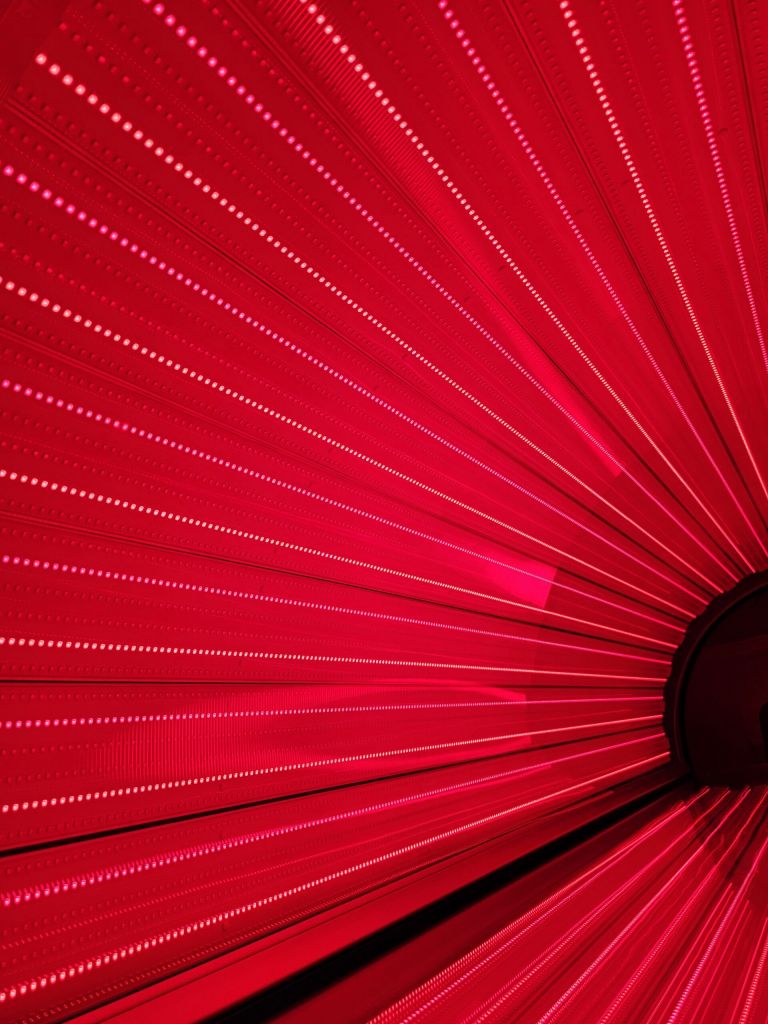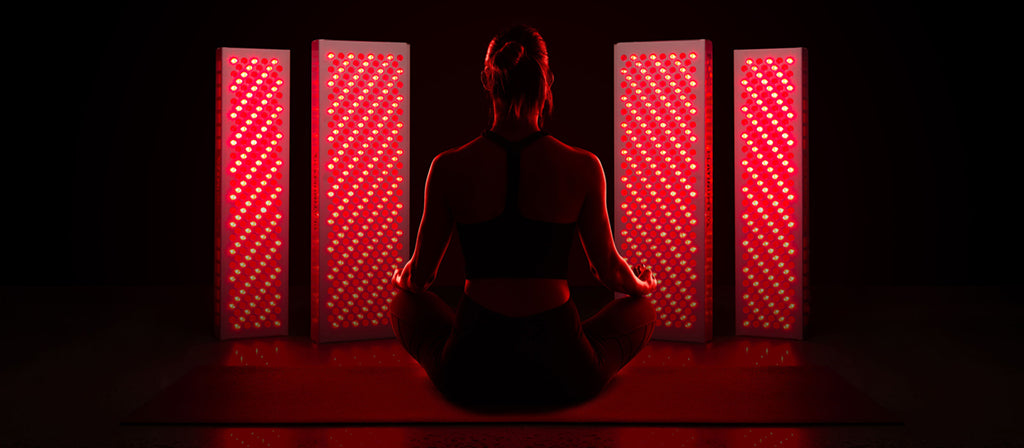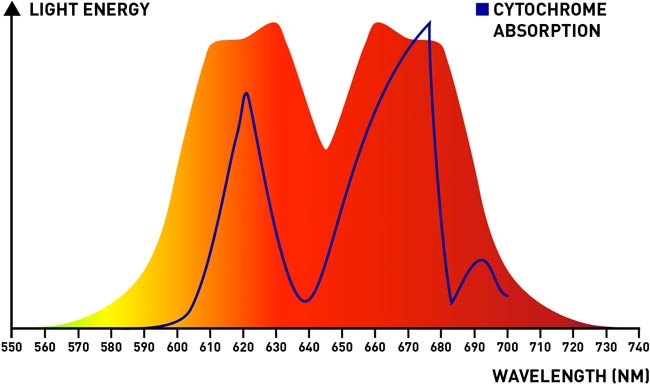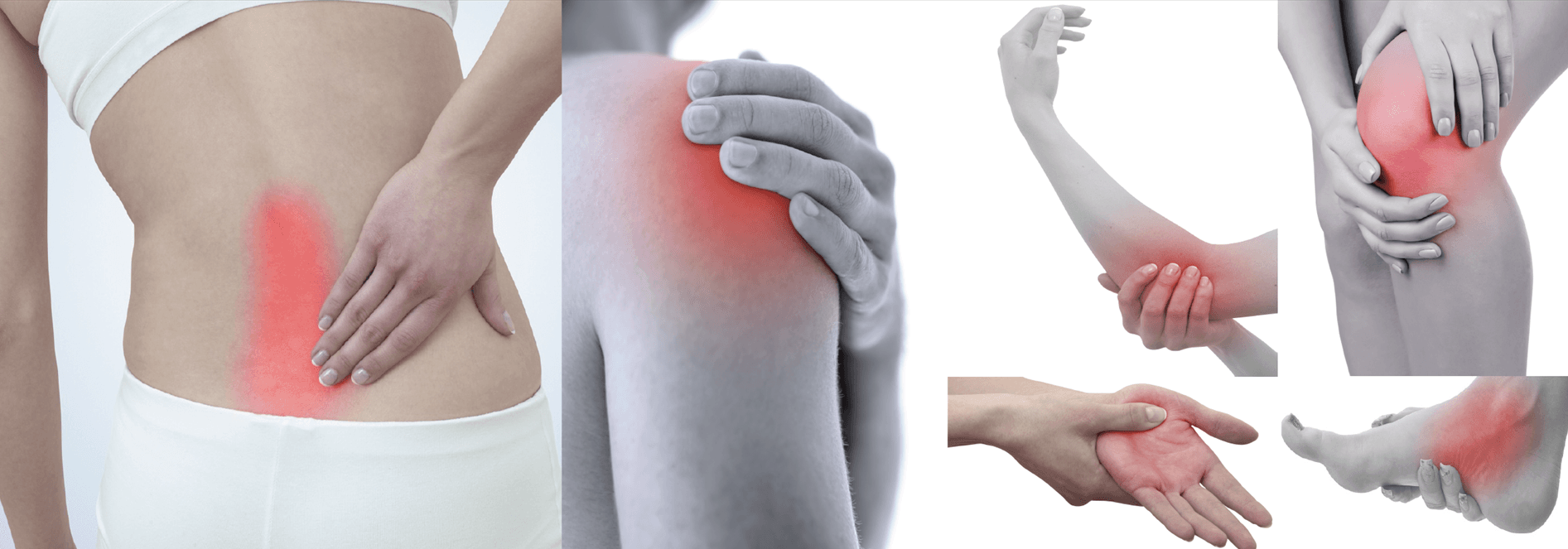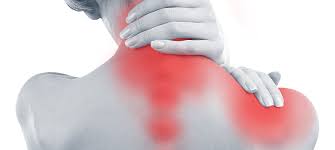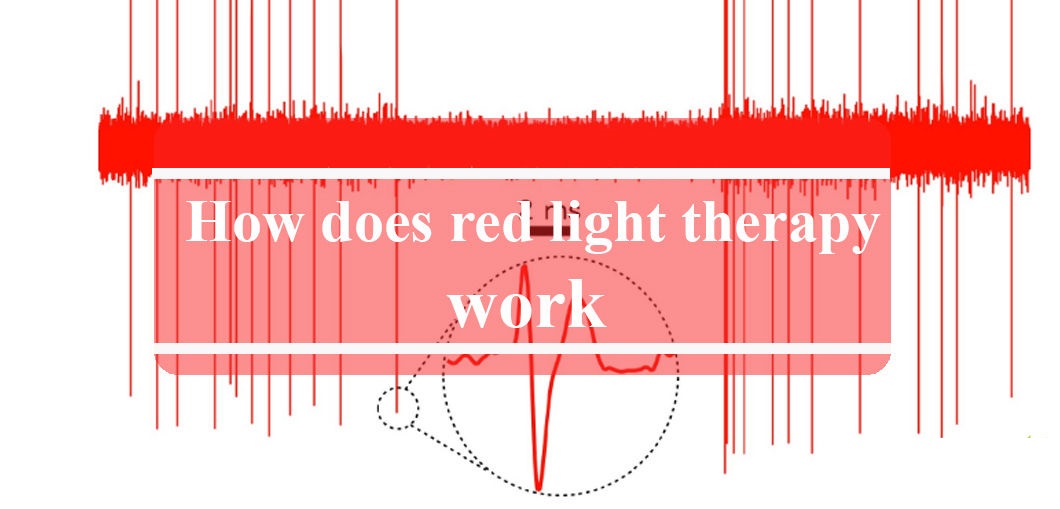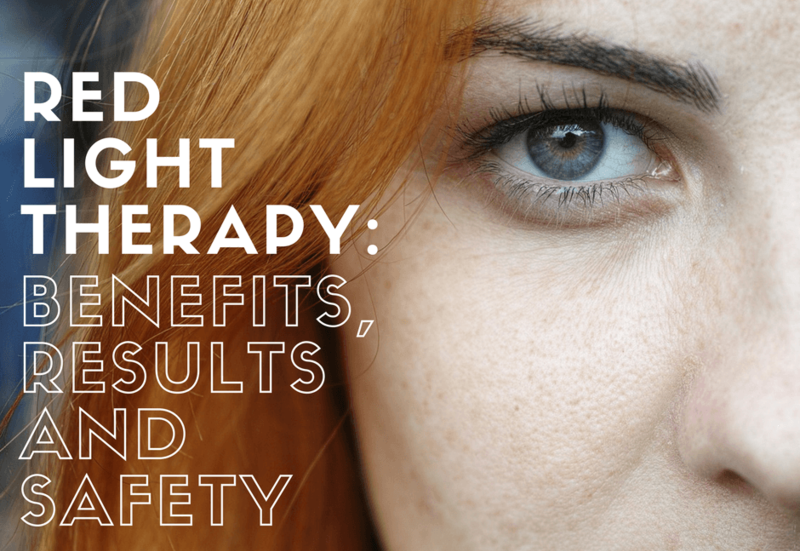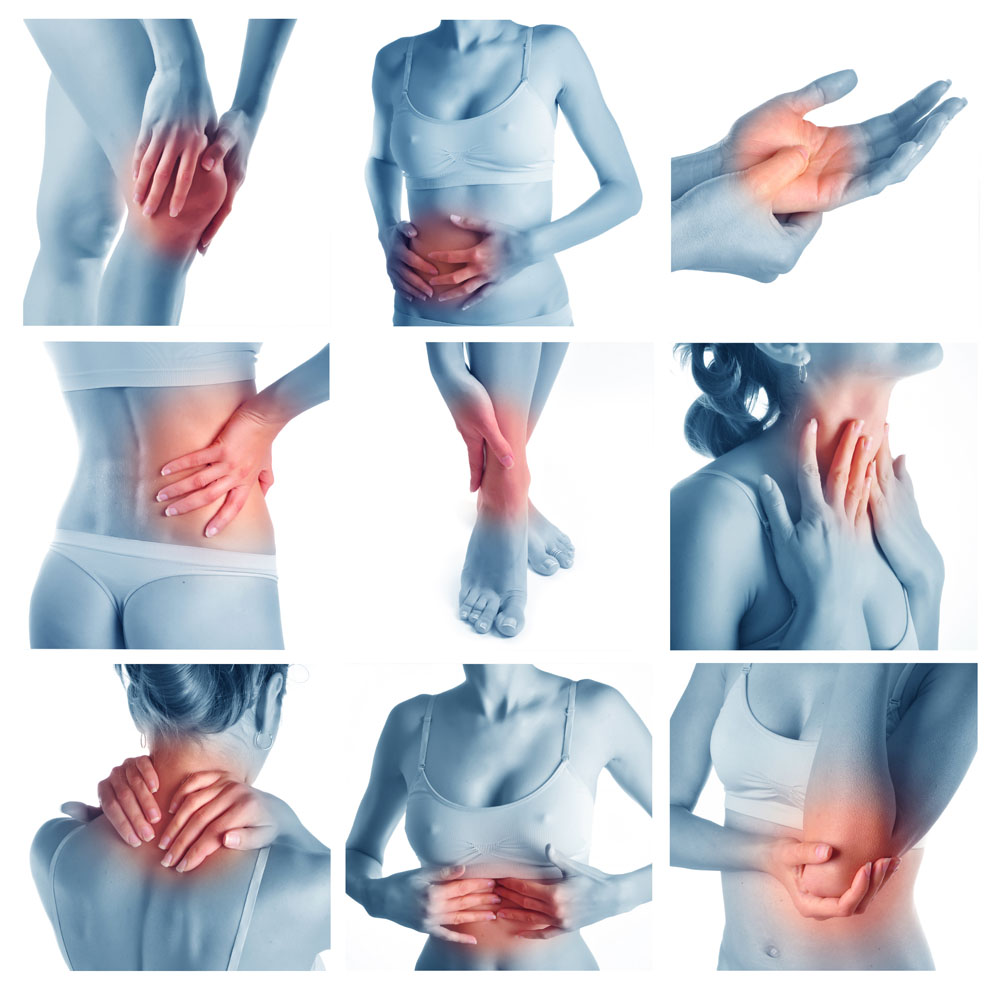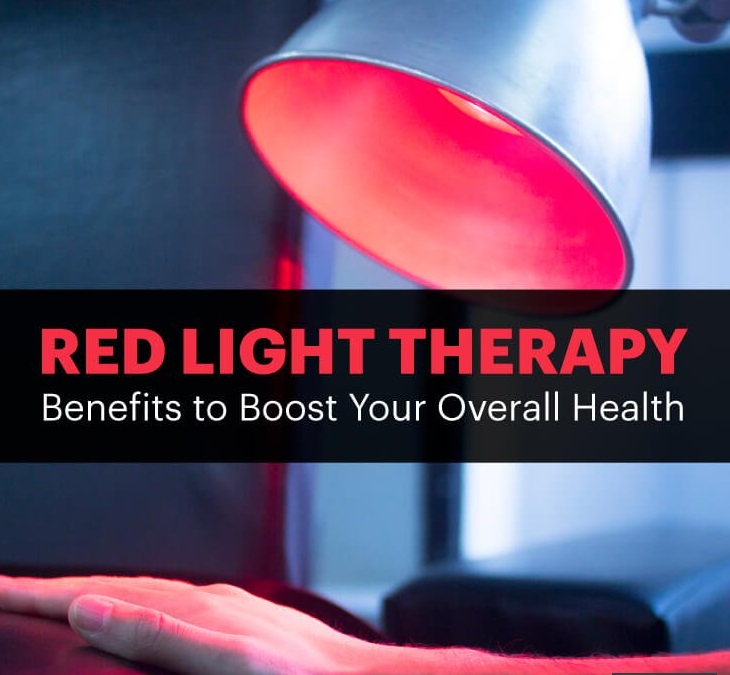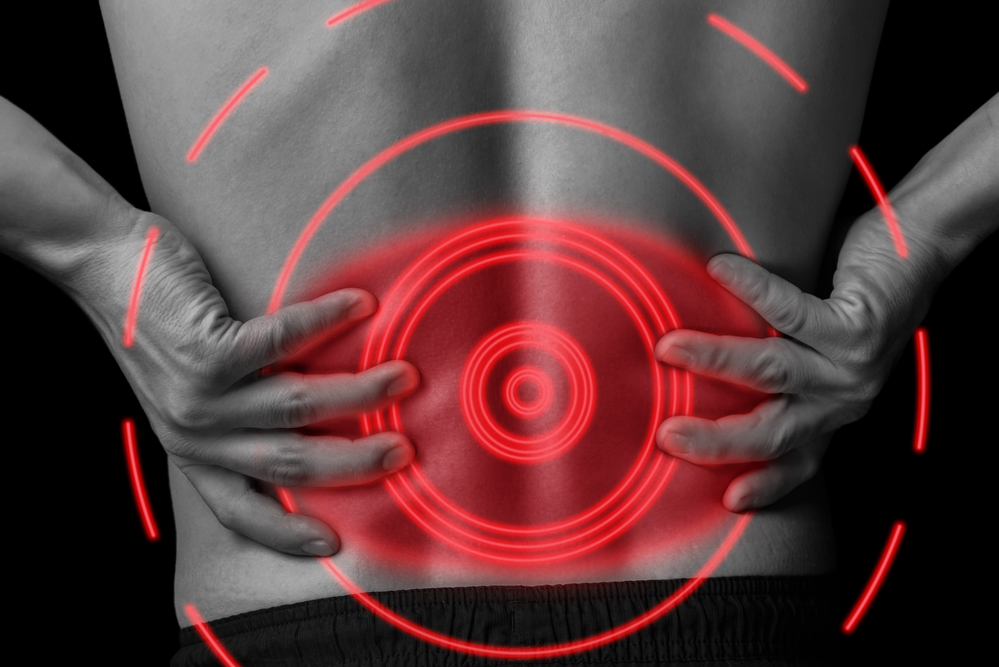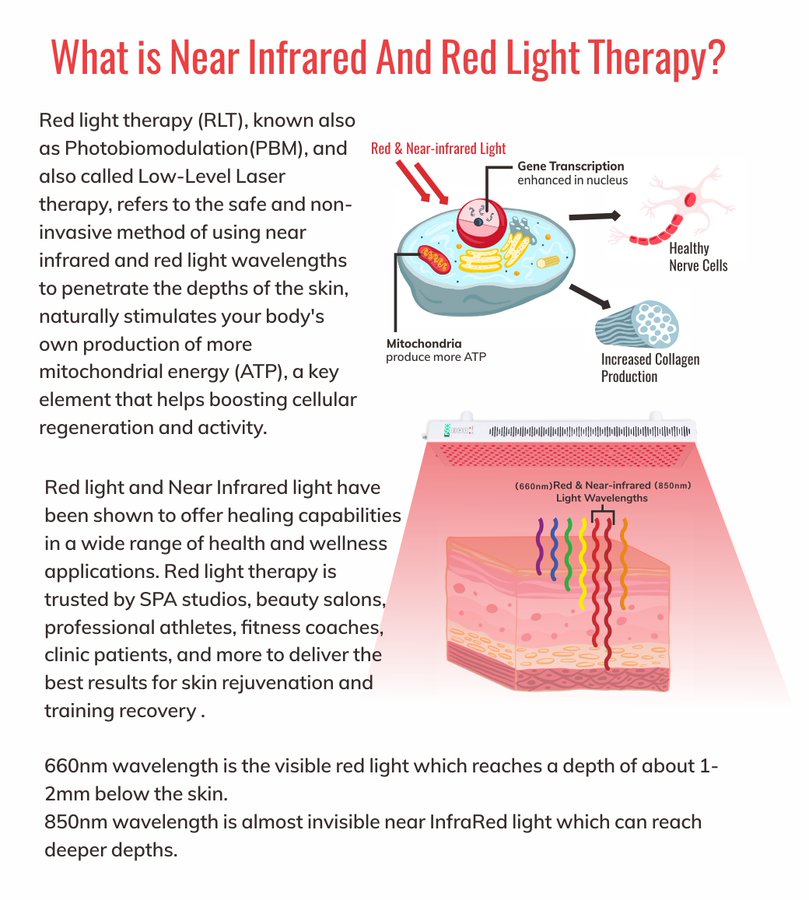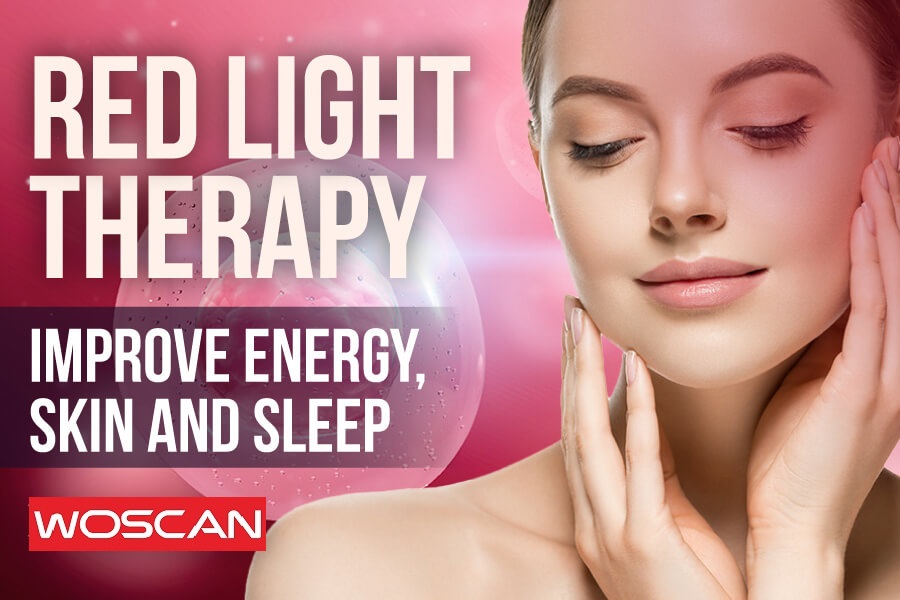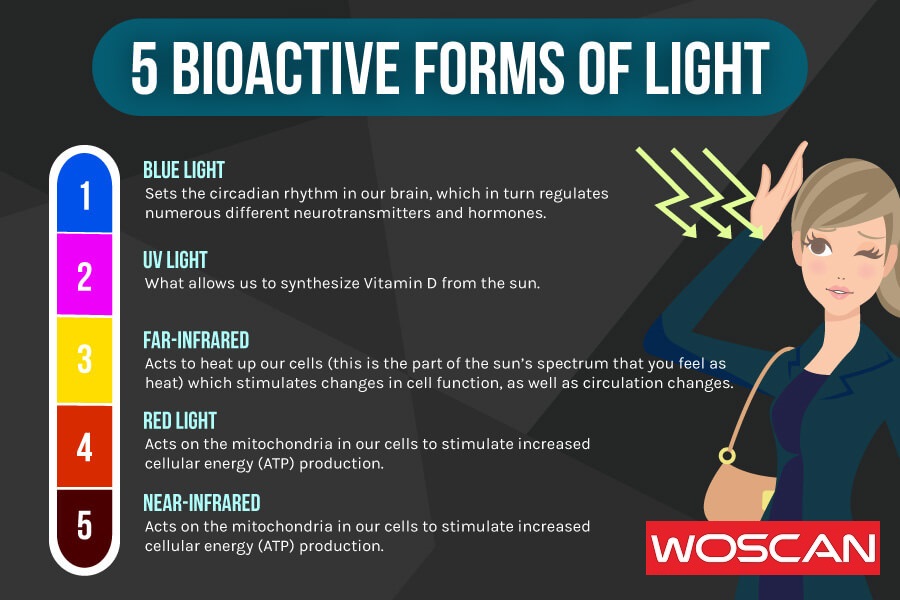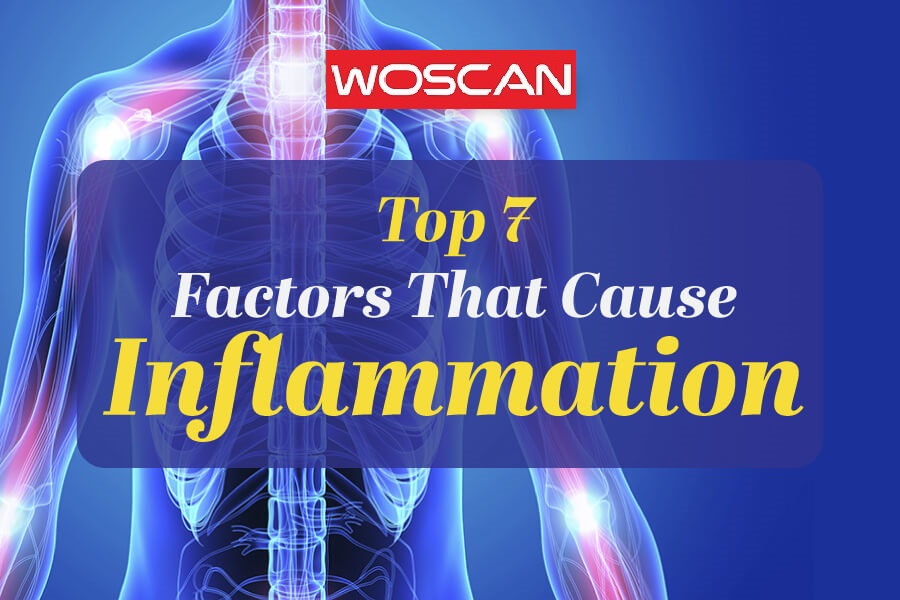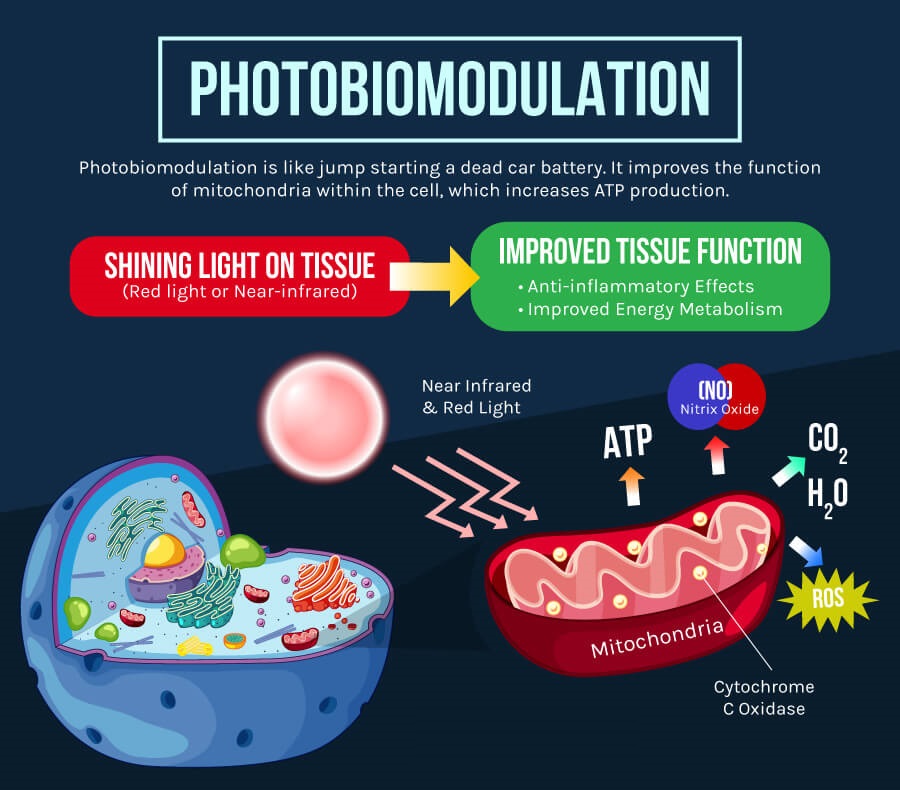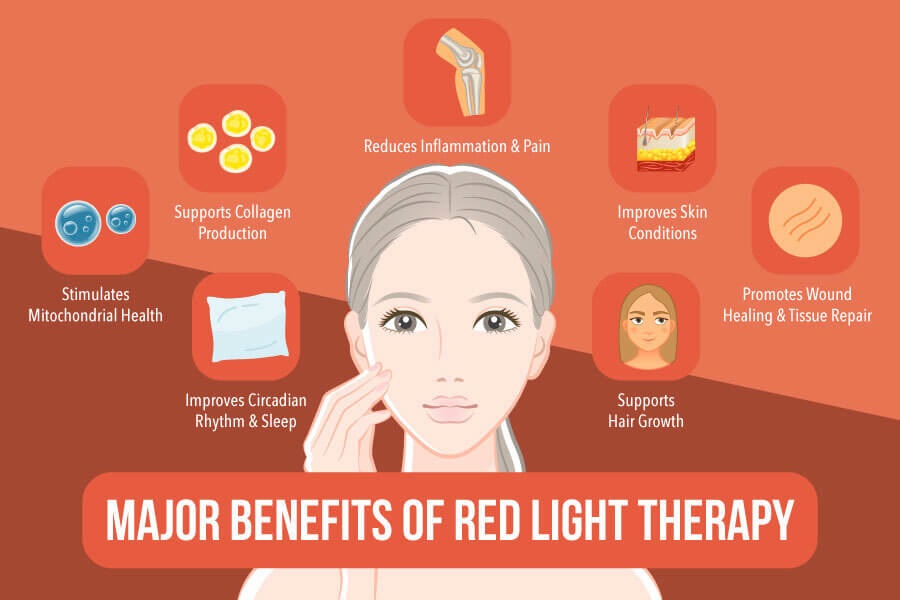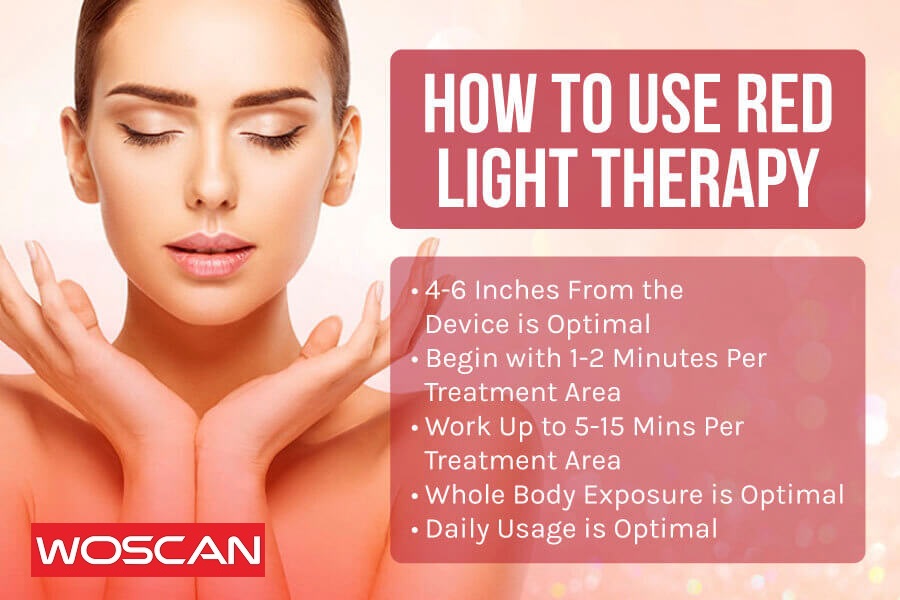
In the constantly evolving world of health and wellness, innovations emerge that challenge conventional approaches and open doors to revolutionary methods. One such innovation that has garnered significant attention recently is Red Light Therapy (RLT). At its core, RLT harnesses the power of specific wavelengths of light, bathing the body’s cells in a rejuvenating glow, and unlocking a plethora of health benefits. Among these advantages, its potential impact on muscle building stands out. As you venture into this article, we’ll delve deep into understanding RLT, demystifying its science, and exploring how it might just be the game-changer you’ve been looking for in your muscle-building journey.
Historical Perspective
The therapeutic power of light has intrigued humans for millennia. Ancient civilizations, from the Egyptians to the Greeks, recognized the healing potential of sunlight, using it to treat various ailments. These early practices, although rudimentary, laid the foundation for the sophisticated light therapies we see today.
Modern red light therapy has its roots in the late 20th century. The breakthrough moment occurred during experiments in space. NASA, in its pursuit to find effective methods to promote plant growth in space, discovered that LED lights, especially those in the red spectrum, accelerated the healing process of wounds. This discovery prompted scientists on Earth to investigate further.
As research progressed, the beneficial effects of red light, especially its ability to promote cellular activity and repair, were increasingly recognized. The transition from aiding wound healing to enhancing muscle growth and repair was a logical step, given the fundamental cellular mechanisms involved. Over the years, what began as an experiment in space has transformed into a sought-after therapy, with applications ranging from skincare to, as we will focus on, muscle building.
In today’s era, with technological advancements and a more profound understanding of biological mechanisms, Red Light Therapy stands tall, having evolved from ancient sun-based treatments to a state-of-the-art approach, revolutionizing how we perceive the power of light in health and wellness.
The Science Behind Red Light Therapy
To truly appreciate the potential of Red Light Therapy (RLT), one must delve into its underlying science. At the cellular level, RLT’s magic comes from a phenomenon known as photobiomodulation (PBM). But what is PBM and how does it interact with our cells, specifically muscle cells, to bring about its myriad benefits?
THE ROLE OF MITOCHONDRIA:
Central to the functioning of our cells are mitochondria, often dubbed the “powerhouses of the cell.” These organelles are responsible for producing energy in the form of adenosine triphosphate (ATP). Red light, when applied to the body, is absorbed by chromophores, including a critical molecule called cytochrome c oxidase, found within the mitochondria. This absorption stimulates the mitochondria, leading to increased production of ATP, the primary energy currency for cells. The enhanced energy levels then enable cells to function more efficiently, promoting healing, growth, and repair.
PHOTOBIOMODULATION: THE CELLULAR RESPONSE TO LIGHT
Photobiomodulation, or PBM, refers to the mechanism through which cells respond to light, specifically in the red and near-infrared (NIR) spectrum. This response is not just a superficial interaction; it triggers deep cellular changes. An apt quote from a study titled “Photobiomodulation and different macrophages phenotypes during muscle tissue repair” sheds light on this:
“Treatment with PBM was able to modulate the inflammation phase, optimize the transition from the inflammatory to the regeneration phase (mainly with NIR light) and improve the final step of regeneration, enhancing tissue repair.”[1]
In simple terms, PBM plays a crucial role in the muscle repair process. It ensures that inflammation, a natural response to muscle injury or stress, is controlled and balanced. Following this, the transition from inflammation to regeneration is optimized, ensuring muscle cells are primed for growth and repair. Lastly, the tissue repair process gets a boost, facilitating a more efficient recovery.
RED LIGHT AND MUSCLE CELLS:
The effects of RLT on muscle cells can be profound. When muscle tissues absorb the red light, cellular metabolism gets a boost. The increased ATP production means that muscle cells have more energy at their disposal. This, combined with the modulating effects on inflammation and regeneration as elucidated by the aforementioned study, ensures a conducive environment for muscle growth, recovery, and overall performance enhancement.
In summary, the science of Red Light Therapy is both fascinating and compelling. By understanding the cellular mechanics, we can better appreciate its potential applications, especially in the realm of muscle building and recovery.
Red Light Therapy for Muscle Building: How Does it Work?
Red Light Therapy (RLT) is rapidly gaining traction in the fitness and wellness sectors for its potential advantages in muscle development and recovery. But how exactly does this non-invasive light therapy work to benefit our muscles? The answer lies in the intricacies of cellular response to specific light wavelengths and their cascading effects on muscle tissue.
PROMOTING MUSCLE RECOVERY:
Regulation of Inflammation: After strenuous activities, such as a heavy workout, muscles undergo inflammation as part of the natural healing process. However, excessive inflammation can hinder recovery. A study titled “Laser Light Therapy in Inflammatory, Musculoskeletal, and Autoimmune Disease” presents compelling evidence on the efficacy of RLT in this aspect:
“LLLT is a promising therapeutic modality in the realm of inflammatory diseases, particularly those of skin and joints that are most accessible to treatment.”[2]
Essentially, RLT ensures that the inflammation process is balanced, thereby facilitating an environment conducive to muscle regeneration and repair.
Enhancing Tissue Repair: Following a period of inflammation, muscle tissue requires efficient repair mechanisms to recover. RLT accelerates this repair process by improving blood flow, increasing the production of ATP (energy for cells), and modulating cellular activities vital for tissue regeneration.
INCREASING MUSCLE ENDURANCE:
Faster Recovery Equals Better Performance: When muscles recover faster, they’re better prepared for subsequent workouts or physical activities. As such, individuals can experience increased endurance and decreased muscle fatigue. A systematic review and meta-analysis titled “Comparison between cryotherapy and photobiomodulation in muscle recovery” reinforces this idea, stating:
“Based on our findings, the use of PBMT in muscle recovery after high-intensity exercise appears to be beneficial, provides a clinically important effect.”[3]
With reduced downtime and enhanced muscle function, individuals can train more frequently and effectively.
ENHANCING MUSCLE GROWTH:
Stimulation of Muscle Protein Synthesis: RLT aids in the synthesis of proteins essential for muscle growth by providing an optimal cellular environment. The increased ATP levels, combined with reduced inflammation and improved blood flow, work synergistically to support the creation and repair of muscle fibers, leading to growth and strength improvements.
It’s evident that Red Light Therapy, with its science-backed benefits, can be a powerful tool for those seeking to optimize muscle growth, endurance, and recovery. It’s a testament to how advances in light technology can align perfectly with human physiology to usher in a new era of muscle building.
Benefits of Combining Red Light Therapy with Exercise
In the pursuit of peak physical performance and well-being, fitness enthusiasts are always on the lookout for strategies that can optimize their training results. Red Light Therapy (RLT) emerges as a compelling solution in this quest. When combined with regular exercise, the synergy between the two can offer manifold benefits that can significantly elevate one’s fitness journey. Let’s delve into the advantages of integrating RLT with your workout routine.
FASTER RECOVERY POST-EXERCISE:
Reduced Inflammation and Pain: Post-exercise soreness and inflammation can often serve as deterrents to consistent training. A study titled “Photobiomodulation-Underlying Mechanism and Clinical Applications” highlights the benefits of RLT in this context:
“Laser therapy is a non-invasive method that contributes to pain relief and reduces inflammation, parallel to the enhanced healing and tissue repair processes.”[4]
By mitigating these common post-exercise issues, individuals can recover more swiftly, ensuring they are ready for their next training session sooner.
ENHANCED MUSCULAR PERFORMANCE:
- Improved Oxygenation and Energy Production: By promoting increased blood flow and optimizing mitochondrial activity, RLT ensures that muscles receive an adequate supply of oxygen and nutrients. This boosts energy production, which in turn can lead to better stamina and performance during workouts.
DECREASED RISK OF INJURY:
- Strengthened Muscle Tissue: The therapeutic light waves of RLT can help strengthen muscle tissues, making them more resilient against strains and potential injuries. This not only ensures a safer workout experience but also reduces downtime due to injuries.
BOOSTED MUSCLE GROWTH:
- Optimized Cellular Environment: RLT provides a conducive cellular environment for muscle growth. By enhancing ATP production and reducing oxidative stress, the muscle cells are better equipped to grow and repair, maximizing the gains from each workout session.
PSYCHOLOGICAL BENEFITS:
- Mood Enhancement and Stress Reduction: Beyond the physical, the soothing effects of RLT can also help alleviate mood and reduce stress levels. This is particularly beneficial as a positive mental state can significantly improve workout performance and consistency.
While exercise alone undoubtedly offers many health benefits, combining it with Red Light Therapy can supercharge these advantages. Whether you’re an elite athlete or someone just embarking on their fitness journey, integrating RLT into your regimen can provide a holistic and enhanced approach to health and well-being.
How to Use Red Light Therapy for Muscle Building
Harnessing the benefits of Red Light Therapy (RLT) for muscle building requires an understanding of its proper application. The effectiveness of RLT can be maximized when certain protocols are adhered to. Here’s a step-by-step guide on how to incorporate RLT into your muscle-building journey effectively:
IDEAL DURATION AND FREQUENCY OF SESSIONS:
- Duration: Most RLT sessions typically last between 10 to 20 minutes. The duration can vary depending on the device, its intensity, and the target area. Always refer to the manufacturer’s guidelines for specific recommendations.
- Frequency: For muscle building and recovery, 3 to 5 sessions per week are generally recommended. Consistency is crucial, and over time, the frequency can be adjusted based on individual needs and results.
BEST TIME TO UTILIZE RLT IN RELATION TO WORKOUTS:
- Pre-workout: Using RLT before a workout can increase blood flow, warm up the muscles, and boost energy production at a cellular level. This can lead to enhanced performance and stamina during your training session.
- Post-workout: Applying RLT post-exercise can aid in muscle recovery by reducing inflammation and accelerating tissue repair. It’s particularly beneficial after intense workouts or when experiencing muscle soreness.
RECOMMENDATIONS ON THE TYPE OF RLT DEVICES:
- Handheld Devices: These are portable and suitable for targeting specific muscle groups or areas of discomfort. They are ideal for athletes or individuals who may require on-the-go treatment.
- Panel Systems: These are larger and can treat bigger muscle areas or the whole body simultaneously. They are perfect for comprehensive muscle recovery and growth stimulation after full-body workouts.
- Bed or Canopy Systems: These are more advanced setups, resembling tanning beds, but designed for RLT. They allow for total body exposure, ensuring a uniform treatment, ideal for serious athletes, businesses or those deeply invested in holistic health and muscle growth.
PROPER POSITIONING AND DISTANCE:
- Ensure the skin is clean and free of barriers like clothing or lotions.
- Position the device so that the light is directly hitting the target area. The distance between the skin and the device should generally be between 6 to 12 inches, but this can vary based on the device’s intensity and design.
SAFETY PRECAUTIONS:
- Avoid looking directly into the lights. Even though RLT is not UV light, it can still be intense for the eyes. Using protective goggles or simply closing the eyes during treatment is advisable.
- When first starting with red light therapy, it’s best to start with shorter sessions and then increase your session time gradually.
In essence, while Red Light Therapy is an effective tool for muscle building, its efficiency greatly depends on its correct application. Always consult the device manual, and when in doubt, seeking advice from professionals familiar with RLT can be invaluable in optimizing your muscle-building results.
Other Notable Benefits of Red Light Therapy
Red Light Therapy (RLT) is a multifaceted treatment, whose benefits extend well beyond muscle building and recovery. Its application in various medical and aesthetic disciplines has shown promising results, making it a sought-after therapy in both clinical and wellness settings. Let’s explore some of the other notable benefits of RLT:
SKIN HEALTH AND ANTI-AGING:
- Collagen Production: RLT stimulates the production of collagen, a vital protein responsible for skin elasticity and strength. This can lead to reduced wrinkles and an overall youthful appearance.
- Acne Treatment: RLT can reduce inflammation and bacteria associated with acne, promoting clearer skin.
- Scar and Wound Healing: By accelerating cell reproduction and increasing collagen production, RLT aids in faster wound healing and can reduce the appearance of scars.
HAIR GROWTH:
- Stimulates Hair Follicles: RLT can invigorate dormant hair follicles, potentially leading to hair regrowth, especially in individuals experiencing androgenic alopecia or pattern baldness.
PAIN MANAGEMENT:
- Joint and Muscle Pain: RLT’s anti-inflammatory properties make it an effective treatment for reducing chronic joint and muscle pain, including conditions like arthritis.
- Neuropathic Pain: Some studies suggest RLT can be beneficial in reducing pain caused by nerve damage or neuropathy.
MOOD AND MENTAL HEALTH:
- Seasonal Affective Disorder (SAD) and Depression: Exposure to red light has been linked to increased serotonin production, potentially helping in alleviating symptoms of SAD and other forms of depression.
- Sleep Quality: By regulating the body’s production of melatonin, a hormone responsible for sleep, RLT can improve sleep quality and patterns.
EYE HEALTH:
- Macular Degeneration: Preliminary research suggests RLT might slow the progression of age-related macular degeneration, a leading cause of vision loss.
IMMUNE SYSTEM BOOST:
- Improved Immune Response: By increasing cell activity and promoting a healthier cellular environment, RLT can enhance the body’s natural defense mechanisms.
WOUND HEALING:
- Accelerated Repair: RLT speeds up the body’s natural healing process by increasing blood flow to damaged tissues and boosting cellular activity crucial for repair.
BRAIN HEALTH AND COGNITIVE FUNCTION:
- Neuroprotective Effects: Emerging studies indicate the potential benefits of RLT in slowing the progression of neurodegenerative diseases like Alzheimer’s and Parkinson’s.
- Improved Cognitive Function: Enhanced blood flow and mitochondrial activity in brain cells might lead to improved cognitive functions like memory and concentration.
The breadth of applications for Red Light Therapy is impressive, making it a versatile and valuable tool in promoting overall well-being. Whether it’s enhancing physical aesthetics or providing therapeutic relief, RLT is proving to be an asset in the world of holistic health.
Red Light Therapy (RLT) stands at the intersection of technology and holistic wellness, offering a gamut of benefits that cater to diverse needs. From optimizing muscle building and recovery for fitness enthusiasts to rejuvenating skin and alleviating chronic pain, RLT’s versatility is truly commendable. Its non-invasive nature, combined with its scientifically-backed efficacy, positions it as a promising solution for those seeking a comprehensive approach to health and well-being.
As with any therapeutic intervention, it’s essential to understand RLT’s proper application, and ensure maximum benefits. However, its steadily growing prominence in both medical and aesthetic arenas underscores its potential.
Whether you’re an athlete, someone navigating chronic conditions, or simply someone keen on exploring cutting-edge wellness solutions, Red Light Therapy might just be the beacon you’ve been searching for. Embracing its light might illuminate a path to enhanced physical and mental vitality.
[1] Souza NHC, Mesquita-Ferrari RA, Rodrigues MFSD, da Silva DFT, Ribeiro BG, Alves AN, Garcia MP, Nunes FD, da Silva Junior EM, França CM, Bussadori SK, Fernandes KPS. Photobiomodulation and different macrophages phenotypes during muscle tissue repair. J Cell Mol Med. 2018 Oct;22(10):4922-4934. doi: 10.1111/jcmm.13757. Epub 2018 Jul 19. PMID: 30024093; PMCID: PMC6156453.
[2] Wickenheisser VA, Zywot EM, Rabjohns EM, Lee HH, Lawrence DS, Tarrant TK. Laser Light Therapy in Inflammatory, Musculoskeletal, and Autoimmune Disease. Curr Allergy Asthma Rep. 2019 Jul 2;19(8):37. doi: 10.1007/s11882-019-0869-z. PMID: 31267251; PMCID: PMC7357616.
[3] Ferlito JV, Ferlito MV, Leal-Junior ECP, Tomazoni SS, De Marchi T. Comparison between cryotherapy and photobiomodulation in muscle recovery: a systematic review and meta-analysis. Lasers Med Sci. 2022 Apr;37(3):1375-1388. doi: 10.1007/s10103-021-03442-7. Epub 2021 Oct 20. PMID: 34669081.
[4] Dompe C, Moncrieff L, Matys J, Grzech-Leśniak K, Kocherova I, Bryja A, Bruska M, Dominiak M, Mozdziak P, Skiba THI, Shibli JA, Angelova Volponi A, Kempisty B, Dyszkiewicz-Konwińska M. Photobiomodulation-Underlying Mechanism and Clinical Applications. J Clin Med. 2020 Jun 3;9(6):1724. doi: 10.3390/jcm9061724. PMID: 32503238; PMCID: PMC7356229.


